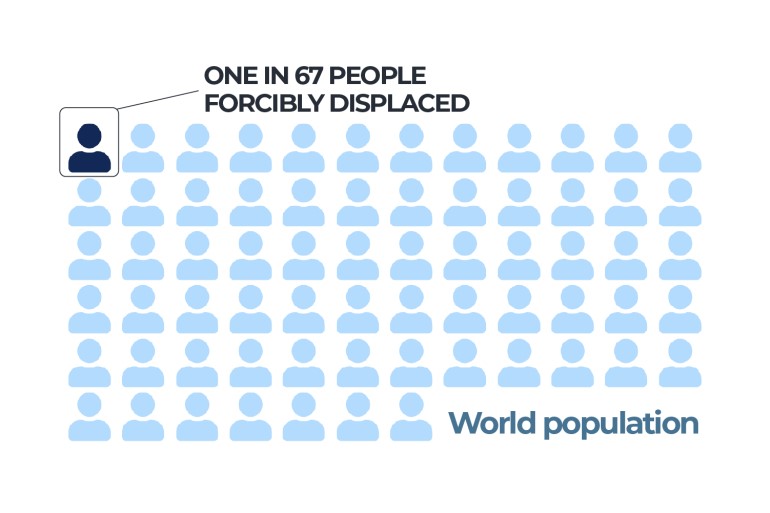
UNHCR Report: 1 in Every 67 People Globally Is Forcibly Displaced

 :
| Updated On: 12-Jun-2025 @ 1:21 pm
:
| Updated On: 12-Jun-2025 @ 1:21 pmSHARE
According to a newly released report by the United Nations High Commissioner for Refugees (UNHCR), an estimated 123.2 million people worldwide—approximately one in every 67 individuals—are currently forcibly displaced. This marks an increase of 7 million people, or 6%, from the end of 2023, and continues a 13-year global trend of year-on-year growth in displacement. Despite this increase, the UNHCR notes that there was a slight decrease in displacement during the first four months of 2025, with the figure dropping to 122.1 million by the end of April.
The report highlights the ongoing impact of global conflict and crises on displacement patterns. UN High Commissioner for Refugees, Filippo Grandi, emphasized that the current global landscape, shaped by geopolitical instability and modern warfare, has created fragile and distressing conditions for millions. He called for renewed efforts toward achieving peace and finding sustainable, long-term solutions for refugees and displaced persons.
Of the 123.2 million displaced individuals, 73.5 million are internally displaced within their own countries due to armed conflicts, political unrest, or natural disasters—an increase of 6.3 million from 2023. Internally Displaced Persons (IDPs) now constitute roughly 60% of the global forcibly displaced population. In the Gaza Strip alone, the United Nations Relief and Works Agency for Palestine Refugees in the Near East (UNRWA) estimates that around 90% of the population—more than two million people—have been displaced as a result of ongoing Israeli military operations.
Refugee figures, on the other hand, slightly decreased to 42.7 million in 2024, down by 613,600 from the previous year. Among these, 31 million are under UNHCR’s mandate, while 5.9 million are Palestinian refugees covered by UNRWA. An additional 5.9 million people are classified as needing international protection. The decrease in total refugee numbers has been attributed to revised estimates for Afghan and Syrian refugees and updated data regarding Ukrainians displaced by war.
Conversely, the number of Sudanese refugees has seen a significant rise, increasing by nearly 600,000 to reach 2.1 million, due to escalating conflict and humanitarian challenges in Sudan.
The report also shows a notable increase in the number of asylum seekers—individuals who have left their home countries and are waiting for legal decisions on their applications for protection. This figure has climbed to 8.4 million, reflecting a 22% increase from the previous year.
The UNHCR’s findings underscore the critical need for international cooperation, humanitarian assistance, and policy reform to address the underlying causes of forced displacement and support the rights and well-being of displaced populations around the world. The agency continues to advocate for stronger protection systems and greater global responsibility-sharing to manage the ongoing displacement crisis.
Contact Us
House. No. : 163, Second Floor Haridev Rd, near Puberun Path, Hatigaon,Guwahati, Assam 781038.
E-mail : assaminkcontact@gmail.com
Contact : +91 8811887662
Enquiry
×
Reporter Login
×